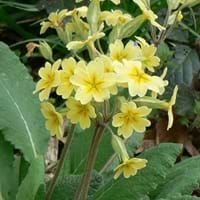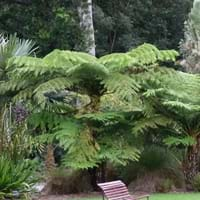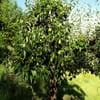Life Span
Perennial
Perennial
Origin
Europe, Russia
Australia
Types
Not Available
Not Available
Habitat
Roadsides, sand dunes, Waste areas
Damp Places
USDA Hardiness Zone
4-7
10-15
Sunset Zone
A1, A2, A3, H1, H2, 1a, 1b, 2a, 2b, 3a, 3b, 4, 5, 6, 7, 8, 9, 10, 11, 12, 13, 14, 15, 16, 17, 18, 19, 20, 21, 22, 23, 24
H2, 8, 9, 14, 15, 16, 17, 19, 20, 21, 22, 23, 24
Habit
Rosette/Stemless
Arching/Fountain-shaped
Flower Color
Light Yellow
Non Flowering Plant
Flower Color Modifier
Bicolor
Bicolor
Fruit Color
Tan
Not Available
Leaf Color in Spring
Green
Light Green
Leaf Color in Summer
Green
Dark Green
Leaf Color in Fall
Green
Dark Green
Leaf Color in Winter
Light Green
Dark Green
Leaf Shape
Oblong
Fern like
Plant Season
Summer
Spring, Summer, Fall, Winter
Sunlight
Full Sun, Partial Sun
Partial shade
Type of Soil
Loam, Sand
Loam
The pH of Soil
Acidic, Neutral, Alkaline
Acidic
Soil Drainage
Well drained
Average
Bloom Time
Early Summer, Summer, Late Summer
Not Available
Tolerances
Drought
Not Available
Where to Plant?
Container, Ground, Pot
Ground
How to Plant?
Divison, Seedlings, Stem Planting
Spores
Plant Maintenance
Low
Medium
Watering Requirements
Average Water Needs, Do Not over Water, Never Over-water, Requires regular watering, Water more in summer
Requires consistently moist soil
In Summer
Lots of watering
Lots of watering
In Spring
Moderate
Moderate
In Winter
Average Water
Average Water
Soil pH
Acidic, Neutral, Alkaline
Acidic
Soil Type
Loam, Sand
Loam
Soil Drainage Capacity
Well drained
Average
Sun Exposure
Full Sun, Partial Sun
Full Shade, Partial shade
Pruning
Remove damaged leaves, Remove dead branches, Remove dead leaves, Remove dead or diseased plant parts
Remove damaged leaves, Remove dead branches, Remove dead leaves
Fertilizers
All-Purpose Liquid Fertilizer, fertilize in growing season
All-Purpose Liquid Fertilizer
Pests and Diseases
Slugs, Snails
Squirrels
Plant Tolerance
Variety of soil types
Drought
Flower Petal Number
Single
Single
Foliage Texture
Fine
Fine
Foliage Sheen
Matte
Matte
Allergy
Abdominal pain, Constipation, Diarrhea, Skin irritation
Carcinogenic
Aesthetic Uses
Beautification, Borders, Landscape Designing, Showy Purposes
Not Available
Beauty Benefits
Good for skin, Making cosmetics, Stops hair loss
Not Available
Environmental Uses
Air purification, Food for insects, Versatility
Air purification
Medicinal Uses
Eczema
Astringent
Part of Plant Used
Root
Leaves, Stem
Other Uses
Decoration Purposes, Medicinal oil, Showy Purposes, Used as Ornamental plant, Used for its medicinal properties
Not Available
Used As Indoor Plant
Yes
No
Used As Outdoor Plant
Yes
Yes
Garden Design
Edging, Feature Plant, Groundcover, Mixed Border
Container, Feature Plant, Tropical
Botanical Name
Primula elatior
DICKSONIA antarctica
Common Name
Oxlip, true oxlip
Australian tree fern, Tasmanian tree fern, hardy tree fern, soft tree fern, woolly tree fern
In Hindi
Oxlip
Tasmanian Tree Fern
In German
Hohe Schlüsselblume
Tasmanian Tree Fern
In French
La Primevère élevée ou Primevère des bois
Dicksonia antarctica
In Spanish
Primula elatior
Balantium antarcticum
In Greek
δακράκι
Tasmanian Tree Fern
In Portuguese
Oxlip
Dicksonia antarctica
In Polish
Oxlip
Diksonia antarktyczna
In Latin
Oxlip
Tasmanian Tree Fern
Phylum
Magnoliophyta
Pteridophyta
Class
Magnoliopsida
Filicopsida
Order
Myrtales
Polypodiales
Family
Onagraceae
Dicksoniaceae
Genus
Oenothera
Dicksonia
Clade
Angiosperms, Eudicots, Rosids
Not Available
Tribe
Onagreae
Not Available
Subfamily
Onagroideae
Not Available
Number of Species
Not Available
Importance of Oxlip and Tasmanian Tree Fern
Want to have the most appropriate plant for your garden? You might want to know the importance of Oxlip and Tasmanian Tree Fern. Basically, these two plants vary in many aspects. Compare Oxlip and Tasmanian Tree Fern as they differ in many characteristics such as their life, care, benefits, facts, etc. Every gardener must at least have the slightest clue about the plants he wants to plant in his garden. Compare their benefits, which differ in many ways like facts and uses. The medicinal use of Oxlip is Eczema whereas of Tasmanian Tree Fern is Astringent. Oxlip has beauty benefits as follows: Good for skin, Making cosmetics and Stops hair loss while Tasmanian Tree Fern has beauty benefits as follows: Good for skin, Making cosmetics and Stops hair loss.
Compare Facts of Oxlip vs Tasmanian Tree Fern
How to choose the best garden plant for your garden depending upon its facts? Here garden plant comparison will help you to solve this query. Compare the facts of Oxlip vs Tasmanian Tree Fern and know which one to choose. As garden plants have benefits and other uses, allergy is also a major drawback of plants for some people. Allergic reactions of Oxlip are Abdominal pain, Constipation, Diarrhea and Skin irritation whereas of Tasmanian Tree Fern have Carcinogenic respectively. Having a fruit bearing plant in your garden can be a plus point of your garden. Oxlip has no showy fruits and Tasmanian Tree Fern has no showy fruits. Also Oxlip is flowering and Tasmanian Tree Fern is not flowering . You can compare Oxlip and Tasmanian Tree Fern facts and facts of other plants too.





